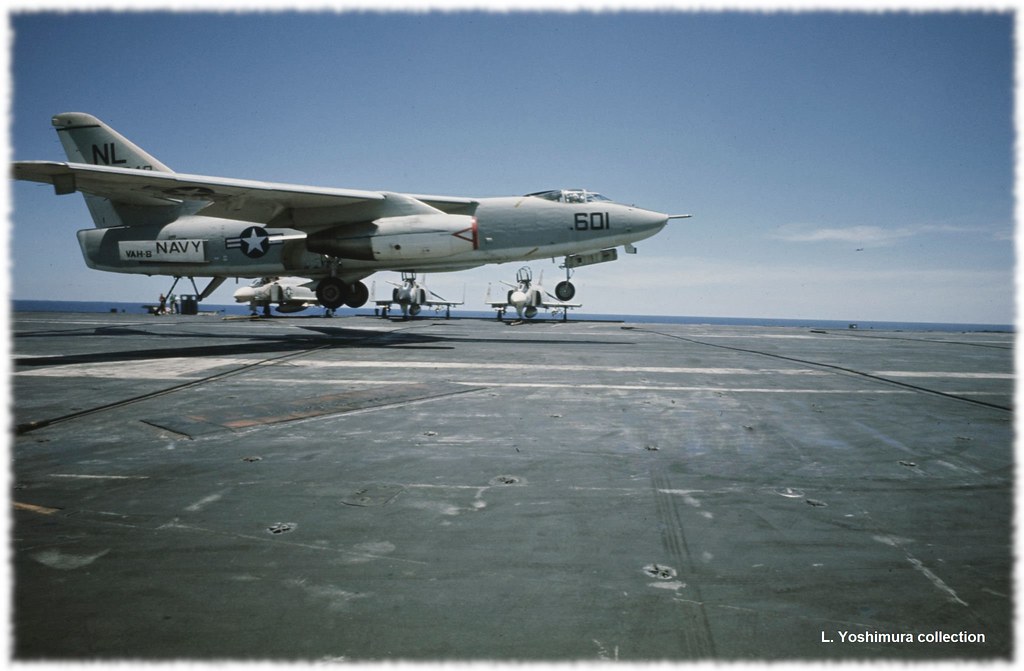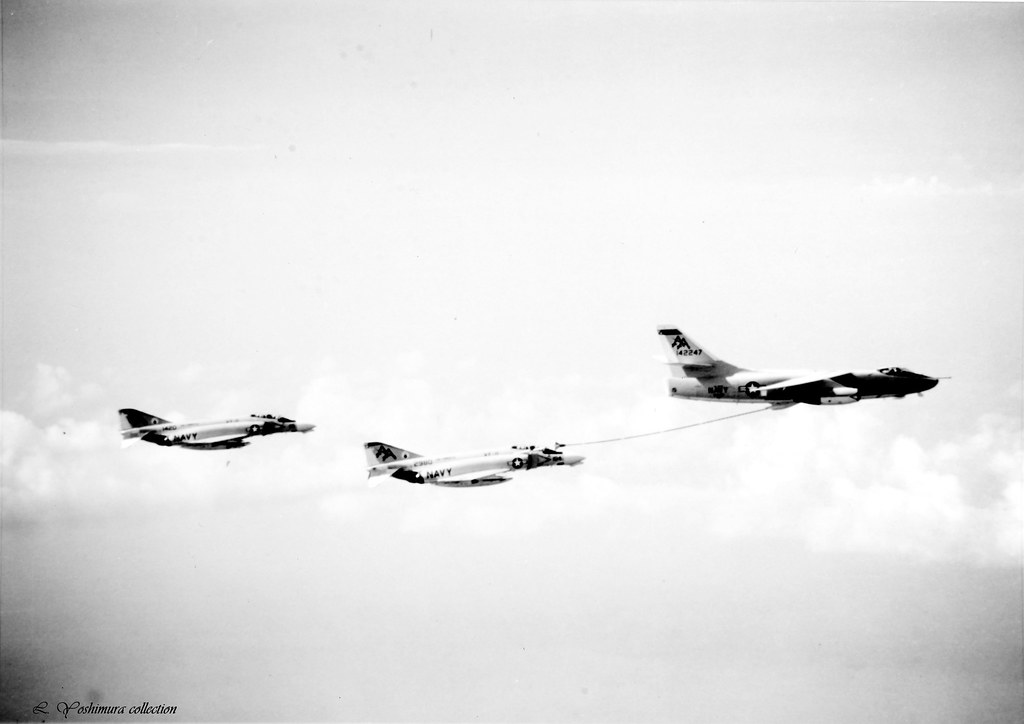#Douglas A-3 Skywarrior
Text
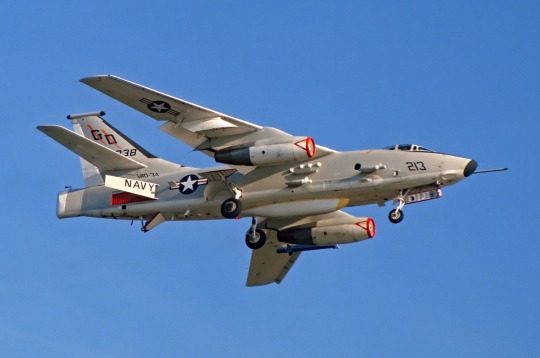
An Electronic Whale on short final for RWY 21 at NAS Point Mugu, California - 25 October 1985
#Douglas#EA-3#Skywarrior#electronic reconnaissance aircraft#electronic warfare aircraft#Military aviation#Navy#aircraft#airplane
54 notes
·
View notes
Video
Vietnam war by Linh Yoshimura
Via Flickr:
1965 - Aerial photograph showing 3 United States Navy, McDonnell Douglas F-4 Phantom II and a Douglas A-3 Skywarrior jets, in flight, with ocean and a coastal landscape in the distance.
12 notes
·
View notes
Text
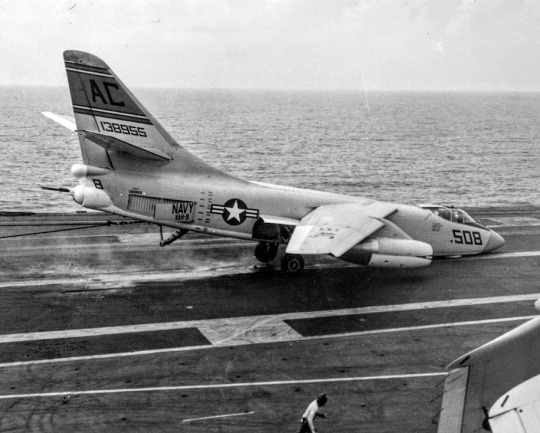
A U.S. Navy Douglas A3D-2 Skywarrior (BuNo 138955) of heavy attack squadron VAH-9 Hoot Owls pictured after its nose wheel collapsed during recovery on board the carrier USS Saratoga (CVA-60), 1959-1960. Note the open canopy. As a high altitude strategic bomber the A3D (after 1962 A-3) was not equipped with ejection seats and the crew was expected to jump off with parachutes in case of an emergency. NARA Image
51 notes
·
View notes
Video
Douglas A-3 Skywarrior by Willard Womack
Via Flickr:
The Skywarrior entered service in 1956, and withdrawn1991. Making it the longest serving plane in the Navy The Air Force version was the B-66 Destroyer .
3 notes
·
View notes
Photo
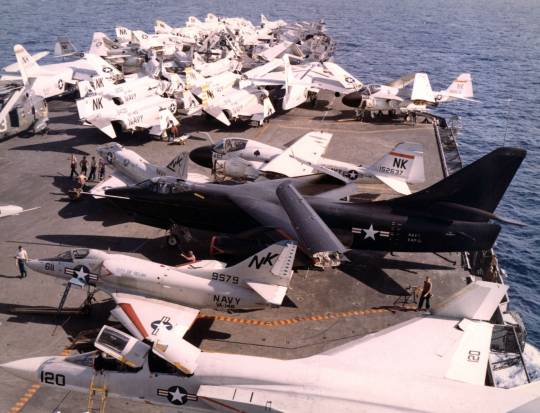
From the front: North American A-5 Vigilante, Grumman A-4 Skyhawk, Douglas A-3 Skywarrior, Grumman A-6 Intruder, McDonnell Douglas F-4 Phantom IIs, and a Sikorsky SH-3 Sea King, on the flight deck of USS Constellation.
#North American A-5 Vigilante#Grumman A-4 Skyhawk#Douglas A-3 Skywarrior#Grumman A-6 Intruder#McDonnell Douglas F-4 Phantom II#Sikorsky SH-3 Sea King#USS Constellation#carrier#aviation
22 notes
·
View notes
Photo
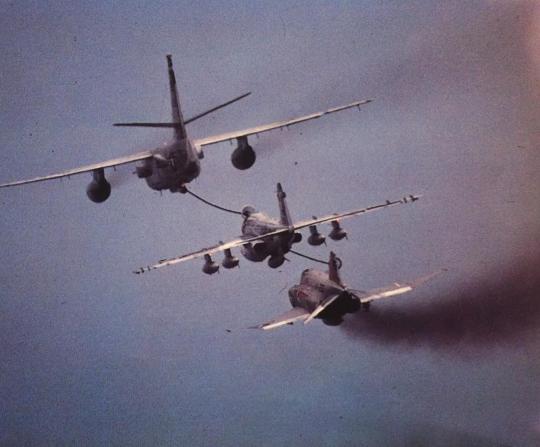
Douglas A-3 Skywarrior заправляет A-6 Intruder, который заправляет F-4 Phantom
6 notes
·
View notes
Video
Vietnam war by Linh Yoshimura
Via Flickr:
A Douglas A-3 Skywarrior NL-601 of Heavy Attack Squadron #8 (VAH-8) approaches the landing strip of the USS Constellation (CVA-64), a Kitty Hawk-class supercarrier, off the coast of South Vietnam, 16th August 1966. Three McDonnell Douglas F-4 Phantom II aircraft are visible in the background.
#A-3 Skywarrior#VAH-8#USS Constellation#CVA-64#US Navy#Vietnam war#F-4 Phantom II#McDonnell Douglas F-4 Phantom II
13 notes
·
View notes
Text
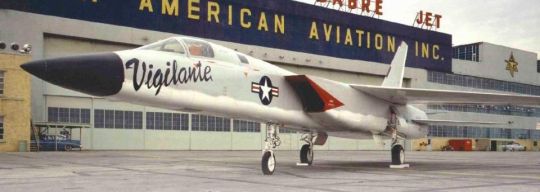
-An XA3J-1 at North American's factory during roll-out. Photo: North American Aviation
FLIGHTLINE: 152 - NORTH AMERICAN AVIATION A-5 VIGILANTE
Designed as a carrier-based supersonic bomber in the 1950s, the Vigilante saw service over Vietnam as a recon plane before being retired in 1979.
Development of what became the A-5 began in 1954 when North American Aviation started a internal program. Seeking to turn around the company's fortunes after the failed XA2J Super Savage, NAA began designing a Mach 2 capable bomber which would give the Navy a nuclear strike option. The initial design, known as the North American General Purpose Attack Weapon (NAGPAW) was evaluated by the US Navy, which replied with a series of needed changes and in July 1955 an initial design contract was awarded, which included a single mockup of the plane. NAA's engineers were able to successfully address the USN's concerns about the design, and in September 1956 a contract for two flying prototypes was signed.

-Orthograph of the A-5 Vigilante. | Illustration: aviastar
DESIGN
The plane, designated XA3J-1, was one of the largest and by far the most complex aircraft to be proposed to operate from a USN aircraft carrier. It had a high-mounted swept wing with a boundary-layer control system (blown flaps) to improve low-speed lift. There were no ailerons, roll control was provided by spoilers in conjunction with differential deflection of the all-moving tail surfaces. Power was provided by two widely spaced General Electric J79 turbojet engines (also used on the Convair B-58 and McDonnell Douglas F-4 Phantom II), fed by variable intake ramps. A single large all-moving vertical stabilizer was paired with the all-moving horizontal stabilizers. In order to save space, the wings, tail and radome were all folding. The XA3J had a crew of two seated in tandem, a pilot and a bombardier-navigator (BN) (reconnaissance/attack navigator (RAN) on later reconnaissance versions), who had some of the most advanced equipment of the time, including an early fly-by-wire system (with electromechanical backup), a primitive HUD system, a multi-mode, radar-equipped inertial navigation system, a TV camera in the nose, and a digital computer to run it all.
In order to make the bomber as streamlined as was possible, it was designed to carry additional fuel tanks and a single B27, B28 or B43 freefall nuclear bomb in internal weapons bay, which would be jettisoned over the target as a single "stores train". Provisions were also made to carry two B43 nukes or Mark 83 or Mark 84 conventional bombs on two external hardpoints, or drop tanks to increase range. Operationally however, these hardpoints were rarely used.
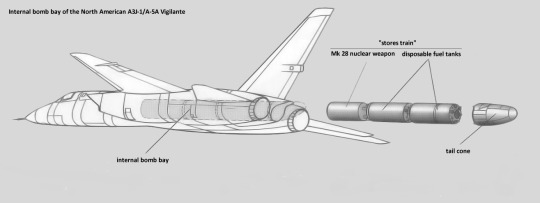
-Internal bomb bay and stores train of the North American A3J-1/A-5A Vigilante. | Illustration: Cobatfor
FLIGHT TESTING, INTRODUCTION, AND SERVICE
First flight of the XA3J was on 31 August 1958 from the same Columbus, OH plant that produced the F-86 and F-100s. Despite one of the prototypes crashing in 1959, the flight tests moved quickly, and by June 1961 the first A3J-1s entered service with Heavy Attack Squadron Three (VAH-3) at NAS Stanford, FL, replacing the Douglas A3D Skywarrior. The following year the plane was redesignated the A-5A under the new tri-service plan. The service life of the A-5A was fraught with issues, with numerous teething problems plaguing its advanced systems. These issues were tamed as maintenance crews became experienced with the Vig's high-tech gadgets, but the plane remained maintenance-intensive (a so-called "hangar-queen") throughout its life. A chronic issue was the stores train bomb release, which had a nasty habit of releasing during catapult shots, resulting in at least one crash. During tests, the train also tended to draft along in the aircraft's slipstream, making accurate bombing (for 1950s/60s definitions of "accurate") difficult.
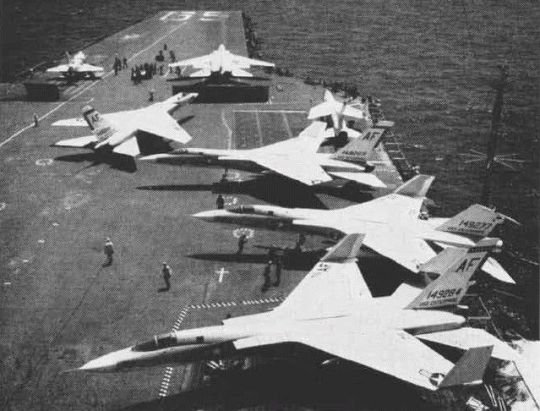
-Five A3J-1 Vigilantes of VAH-7 ("Peacemakers of the Fleet") on CVAN-65 USS Enterprise in 1962. | Photo: USN
Fifty-eight A-5A were completed (out of an order of 64 aircraft) when NAA switched to the upgraded A-5B model. The B model incorporated changes made in light of the Navy's requirement that the Vigilante be able to take off at max weight with zero wind over the carrier being rescinded. This change allowed North American to increase the bomber's weight, adding a dorsal hump to carry more fuel. Only 18 of the A-5B were completed before the US Navy, undergoing a shift in policy away from manned nuclear bombers, canceled the order.
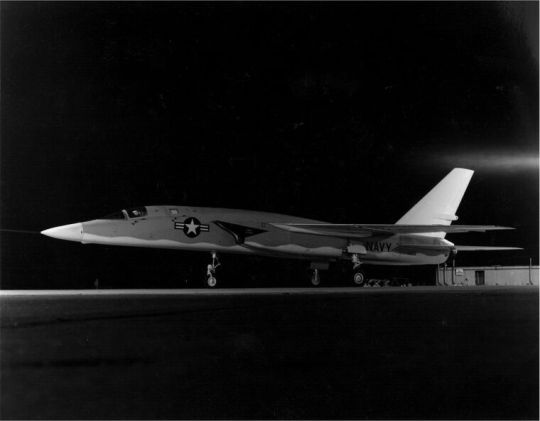
-North American A3J-2 Vigilante (BuNo 146699), circa 1960. This aircraft was the third production A3J-1 which was then modified to an A3J-2 (after 1962 A-5B and YA-5C) and finally to the A3J-3P (RA-5C). | Photo: US Navy
Developed from the A3J-2, the A3J-3P (later RA-5C) was a strike/reconnaissance variant of the Vigilante, incorporating the CCTV in the nose with a "canoe" fairing holding a full suite of gear including:
KA-51A/B forward-looking oblique angle film camera.
KA-50A, KA-51A, or KA-62A vertical film camera.
Passive electronics countermeasures (PECM) antenna for the AN/ALQ-61 Electronic Reconnaissance System. The AN/ALQ-61 was an "electronic intelligence (ELINT)" system that would pick up radar emissions and pin down their coordinates, frequency, and pulse pattern. The ELINT data was recorded on magnetic tape, with storage capacity for 112 minutes of continuous ELINT observations.
Various combinations of panoramic, vertical, or oblique film cameras. Camera fit included KA-58A panoramic camera for medium- to high-altitude work, or a KA-57A panoramic camera for low-altitude work. The cameras shot through prisms in the canoe that could be pivoted to permit shots straight down or from side to side.
AN/AAS-21 infrared sensor, which could provide a continuous film strip of thermal targets, such as hidden trucks, over a field of view 140 degrees wide.
Antenna for the Westinghouse AN/APD-7 "side looking airborne radar (SLAR)" system, which shot radar pulses out to the side of the aircraft and stored the return echo on a long film strip, permitting all-weather, day-night imaging.
Another PECM antenna for the AN/ALQ-21 system.
Additionally, a flash pod, powered by a ram-air turbine in its tail, could be carried under one wing to provide illumination for nighttime recon. The sensors were operated by the back-seater (also known as a "GIB": guy-in-back), formally called a "reconnaissance-attack navigator (RAN)". The bomb bay was filled with semi-permanent fuel tanks (though the plane apparently retained the ability to carry offensive weapons, this was never tested or confirmed). The remaining A-5A and A-5B aircraft were all converted to RA-5C standards, along with 33 new-build aircraft. Squadrons that had formerly flown the A-5 were transitioned to the RA-5 beginning with VAH-3 in July 1963, becoming Reconnaissance Attack Squadrons (RVAH) as they did so. Eventually ten squadrons of RA-5s were established, with the NAS Stanford RVAH-3 being joined by carrier-based RVAH-1, RVAH-5, RVAH-6, RVAH-7, RVAH-9, RVAH-11, RVAH-12, RVAH-13 and RVAH-14.
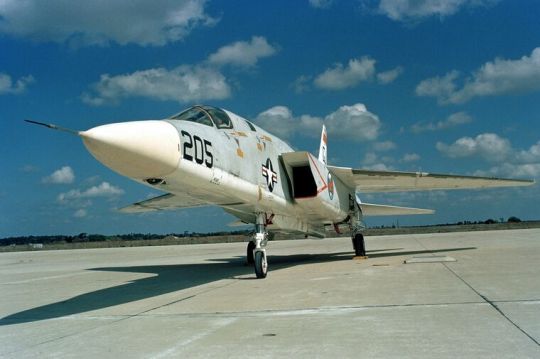
-RA-5C Vigilante of Reconnaissance Heavy Attack Squadron 3 (RVAH-3) "Sea Dragons" is parked on the flight line at Naval Air Station Sanford, Florida, on 27 March 1968. - | Photo: US Navy
Starting in July 1964, the RA-5Cs saw extensive service over Vietnam, carrying out dangerous post-strike damage assessment missions. Although fast and nimble, the Vig proved vulnerable to ground fire, with 14 RA-5s lost to AAA, 3 to SAMs and one shot down by a NVA MiG-21. Nine more were lost to accidents, and as a result three dozen additional aircraft were built between 1968 and 1970. Despite providing invaluable reconnaissance data, the RA-5 began to be phased out starting in 1968, with NAS Stanford being closed and the Vigilante's parent wing, Reconnaissance Attack Wing One, being transferred to Turner AFB in Georgia, which was turned over to the Navy and renamed NAS Albany. Barely six years later, NAS Albany was closed as a result of post-Vietnam drawdowns, and the remaining RA-5s were transferred again to NAS Key West. As newer and larger aircraft like the F-14 and S-3 were introduced in the mid-70s, the Navy began disestablishment of the RA-5 squadrons, with the last leaving Key West on 20 November 1979.
NASA, THE RAAF, AND THE USAF
At least one A3J-1 was bailed to NASA for a time while the Dryden FRC was participating in research for the US SST program. In 1962 Vigilante BuNo 147858 was given NASA tail number 858 and was flown by NASA pilot Bill Dana on 21 flights along airways around LAX to determine approach conditions for an SST landing patterns. After the conclusion of the program, the plane was returned to the Navy.

-NASA's A3J-1, wearing a day-glo orange tail flash, on 19 December 1962. | Photo: NASA DFRC
The RAAF was interested in the A-5 as a possible replacement for their aging Canberra bombers, considering the Vig alongside the F-4, Dassault Mirage IVA, BAC TSR-2 and F-111. Despite the A-5 being available without the delay anticipated for the F-111, the order for three dozen Vigilantes was not issued.
At some point in the Vigilante's development, North American advanced a proposal to the Air Force for the 'Retaliator', an A-5 with a liquid rocket added to the bomb bay, as an interceptor, but the USAF showed no interest. In 1972 NAA again proposed a modified A-5, known internally as the NR-349, to the USAF as an Improved Manned Interceptor. The internal bomb bay was modified to house a third jet, and six AIM-54 Phoenix missiles would be carried under the fuselage. Again the USAF was uninterested.
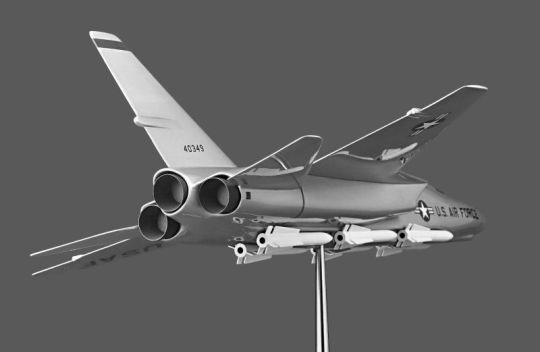
-Scale model of the Improved Manned Interceptor concept, in USAF markings. | Model: NAA/Rockwell
SURVIVORS
By 2004, all of the surviving RA-5s that had been retired to AMARG had been either scrapped or preserved as museum aircraft. A limited number of aircraft were still in storage at NAWS China Lake for eventual use in weapons tests. Around a dozen aircraft have been retained in museums around the US, with only one A-5A on display at NAS Pax River in Maryland, the balance being RA-5s.
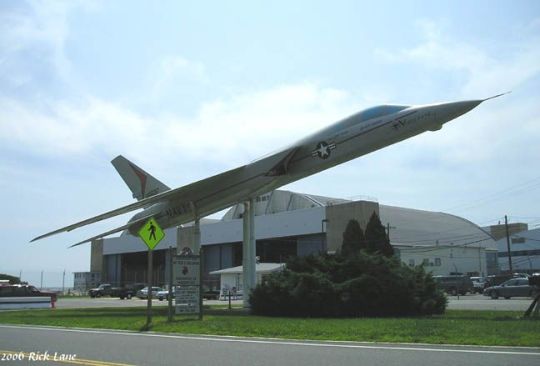
-BuNo 146697, the sole remaining A-5A, on display at Pax River. | Photo: Richard Lane
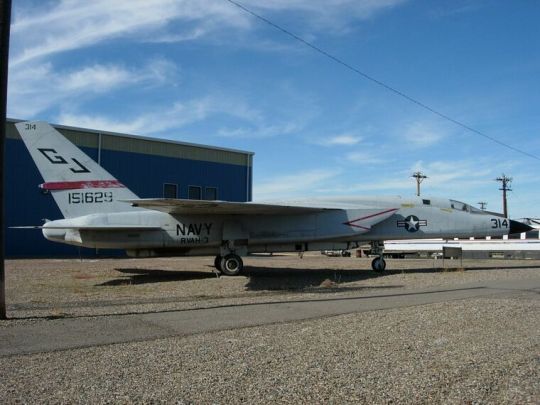
-RA-5C Vigilante (BuNo 151629) on display at the Pueblo Weisbrod Aircraft Museum. It wears the markings of the fleet replacement squadron RVAH-3 Sea Dragons. | Photo: Kristian Jones
#aircraft#aviation#avgeek#airplanes#cold war#airplane#cold war history#coldwar#aviation history#us navy#usn#north american aviation#north american a 5a#a3j-1 Vigilante#a-5a Vigilante#a5a Vigilante#a 5a Vigilante#ra5c Vigilante#ra5c
41 notes
·
View notes
Photo
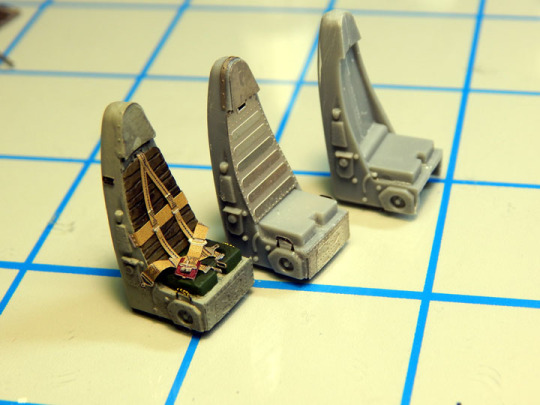
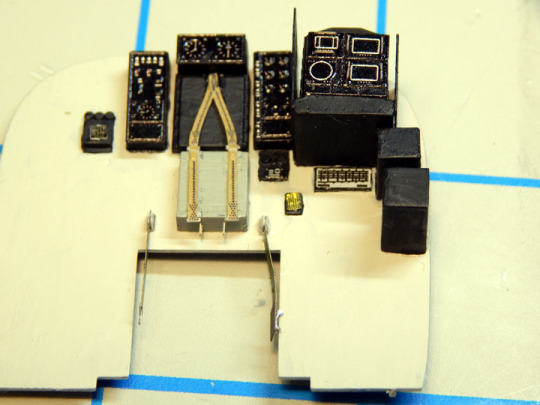
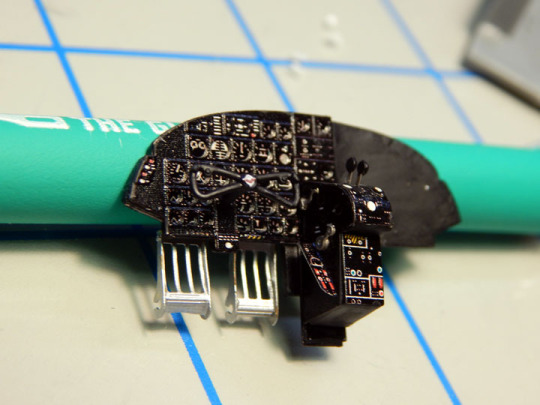



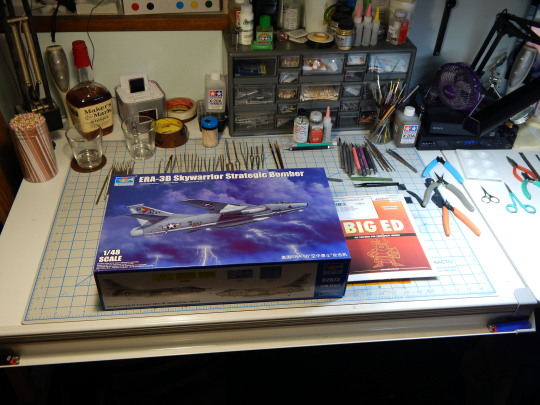
This next build is Trumpeter’s 1/48 ERA-3B of VAQ-33. This is being built for a Chief Petty Officer who was part of the air crew. The Douglas A-3 Skywarrior was originally built as a jet bomber in the 1950’s. It evolved into a few variants. The KA-3 was used as a refueling craft. The ERA-3B was an ELINT (Electronic Intelligence) role used in Viet Nam and for many years during the Cold War. It performed briefly during the Gulf War then was finally retired in September 1991.
I will be adding photo etch details from Eduard. Starting with the cockpit I detailed the 3 seats, rear bulkhead, dash and equipment rack. The photo etch set even includes the handles for the electronic equipment. I then built up the nose radar assembly and the nose gear bay. There were no extra details for the radar but the nose gear bay had detailed photo etch walls and wiring. I added some hydraulic lines as well with 32awg wire. Next was the electronic ELINT cabin that sits behind the cockpit. There were no details except for seat belts so I added some cushions using cloth tape. Next up will be detailing the main gear bays then assembling the fuselage.
See all the details and more photos in my build log at https://davidsscalemodels.com/build-log/1-48-era-3b-skywarrior-vaq-33/
6 notes
·
View notes
Video
In Flight Refueling by Linh Yoshimura
Via Flickr:
Oct 2, 1968 - An F4B Phantom II Fighter moves into position for refueling from a KA-3B skywarrior tanker aircraft while another Phantom awaits its turn. US Navy Photo
9 notes
·
View notes
Video
138959 | Douglas | KA-3B Skywarrior | USNavy // 148486 | Douglas | A4D-2N Skyhawk | USNavy by Florian DSO
Via Flickr:
Douglas A3D-2 Skywarrior, redesignated A-3B in 1962. USN 138959 converted to KA-3B (tanker aircraft) by NARF Alameda Sept. 1967. To MASDC as 2A0049 Aug 27, 1970. Scrapped at MASDC. Douglas A3D-2 Skywarrior/Bu. 138959, 1967-68: VAH-4 as ZB-3. Nice original slide taken aboard the USS Kitty Hawk (CVA-63) sometime in late 1967 at "Yankee Station" in the Tonkin Gulf. There is KA-3B Skywarrior landing, and Douglas A4D-2N (A-4C) Skyhawk BuNo 148486 (VA-112) (NH-405) on deck, which would be shot down a short time later (1/3/1968) by an SA-2 near Kien An/Ninh Giang over North Vietnam with the pilot ejecting and having become a POW. Scanned from the original 35mm slide, which is part of my own personal collection. It is therefore with pleasure that I share this photo with the people of FLICKR. Obviously, I also thank its author, to whom I give him all the credit.
3 notes
·
View notes
Photo
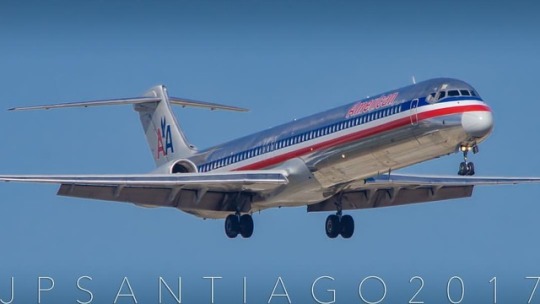
N467AA on final approach- since I took this photo last year, this American MD-80 was retired from service in June of last year. The MD-80 series has a remarkably efficient flap system despite its mechanical simplicity that is derived from the flap system of earlier DC-9 variants. Instead of deploying out on tracks, the Mad Dog's flaps are externally hinged with the hinge point in the triangular fairings below the wing. This allows a relatively simple flap to act as a slotted flap which is more efficient. There is also a fixed vane attached to the main flaps that allows the flap to act like a double slotted flap (even more efficiency!) without the mechanical complexity of true double slotted flaps. The use of external hinges is seen on other Douglas aircraft from the DC-10/MD-11 to the A-3 Skywarrior. Even the A-1 Skyraider has externally hinged flaps. #Avgeek #aviation #aircraft #planeporn #KDFW #DFW #dfwavgeek #airport #planespotting #airlines #McDonnellDougas #MD80 #American #instagramaviation #N467AA #instaaviation #aviationlovers #aviationphotography #flight #Avgeekery #AvgeekSchoolofKnowledge (at DFW Founders Plaza)
#avgeek#instagramaviation#planeporn#instaaviation#flight#avgeekery#avgeekschoolofknowledge#planespotting#aircraft#dfwavgeek#mcdonnelldougas#airport#aviation#kdfw#american#dfw#n467aa#aviationlovers#md80#aviationphotography#airlines
3 notes
·
View notes
Text
TFP Challenge: Day 5
Let’s face it, we’d all like to experience the TF universe for realsies. Mostly. Anyways, ever have an OC or self-insert? Share them here!
Oh ho ho. Do I have any OCs for Prime? Any other verse and I’d have one, sometimes two. But not for Prime. Prime has a whole flock of them. 28 to be exact. And if you have been reading my fic on DA, you have already met some of them. They are all Cybertronian.
Sorry. Long post.
First of all we have Liliy, my main OC. Her alt-mode is human. And she is the leader of a merry band of ex-Cons who call themselves the Cybertronian Rebel Crops or CRC. Liliy is a Neutral. In bot mode her colors are red and greys. (Her designs)
Leecher is her second-in-command and usually does more of the leading than Liliy because she often takes off on road trips by herself. Leecher is a matte black 80′s Chevy El Camino. Leecher is also Neutral and helped Liliy escape Cybertron during the beginning of the war.
The first of the ex-Cons and third-in-command is Alfa. He is also in charge of all ground and space bridge operations. He is dark gray, almost black, with hints of forest green. He’s thin and tall, taller than Optimus and second tallest of the group. His alt-mode is the B-2 Spirit. He is usually stoic. Alfa’s assistant is Victor, a cheerful grounder who loves watching cartoons. His colors are metallic sky blue and white. And his alt is a Ford Flex.
Bravo is the head engineer. He is big and bulky. And he can build almost anything given enough time. His colors are olive green and tan. His alt-mode is a HEMTT (Heavy Expanded Mobility Tactical Truck). He may seem gruff but he is very caring. Bravo’s assistants are Whiskey and X-ray. X-ray is a blue utility truck who has yet to show me his personality. And Whiskey... he is a little strange. He is brown and gold and his alt-modes tend to be top-secret prototype flying machines. No one is really sure how he manages to scan them because he never tells. His current one is a quinjet with stealth tech.
Charlie is the energon manager. He is in charge of all the energon, from collecting to processing to storage, and is a stickler for rationing. He is light grey and his alt is a Douglas A-3 Skywarrior modified as a tanker. Helping Charlie with the energon refining is Jimbo. His alt is a charcoal ‘93 Ford F-350, crew cab, long bed with a 6 in lift kit. (based off my dad’s old truck) And Quebec whose alt is an ice blue small plane. (idk what kind)
Delta is in charge of the lab. His colors are yellow, blue and white and he is a hook-type tow truck. As lab techs, he and his assistant, Steven, a teal and silver Aermacchi MB-339, are also qualified as medics should the need for more help arise.
Echo is basically the Soundwave of the CRC. Except he will actually talk to you and he shows his face. As the Communications Officer, he does most of the keeping tabs on who is where and all that. His alt is the F-117 Nighthawk. He is black with flecks of pale gold. And he turned out to be surprisingly shorter than I originally imagined after I picked his alt. The communication’s assistant is Lima. A lime green modern VW Beetle, Lima is small and cranky.
Foxtrot is Knock Out with better bedside manners and he doesn’t fret over his finish. Well, not really Knock Out but the others compare him to the flashy medic often. He’s red and white. His alt is a Jeep Wrangler. He is talkative and loves to have fun. Though, technically the assistant, Oscar often takes better care of the med bay than Foxtrot. He is responsible and has to put up Fox’s antics. He is red and yellow. And his alt is an Eurocopter EC145. He is one of the two helicopters in the group.
The Miners are Mike and Nova. They consider themselves actual brothers and will introduce themselves as such. “My name is Nova and this is my brother, Mike.” And vice versa. Mike is cherry red and Nova is maroon. Even though they are quite capable of holding their own in a fight, the others are very protective of them and they are often left behind on dangerous missions to run the ground bridge (Mike) and communications (Nova).
The giant of the group is Kilo. He mainly does the heavy lifting. He’s blue gray with hints of grey. And his alt is a C-17. In bot mode, he’s about twice as tall as Optimus.
Pepper and Tango are the computer techs. Pepper is an neon yellow dump truck type snow plow. He hates the desert. Tango is orange with silver decals and his alt is an Audi R8. Neither of them like to go out much.
The CRC surveillance team has three flyers and three grounders. The twins, Golf and Indy, are Gulfstream G500s. Golf is cream and royal purple. Indy is cream and royal blue. The other flyer is the other helicopter, Yankee. (unknown model) His colors are peach and pistachio. Harry is yellow and his alt is a Hummer H2. The unofficial leader of the team is Romeo. He is a lot like Foxtrot and is also compared to Knock Out by his peers. He is a dark red Pagani Zonda F. And finally there is Zulu. A black Chevy Tahoe, he’s a essentially the Cybertronian equivalent of a black suit government agent.
And last but not least is Ucon. He is the only one to retain his Eradicon form and Decepticon insignia allowing him to be a spy on the Nemesis. He is very good at his job because Soundwave hasn’t found him out yet. His paint is color changing: matte black when he is off-duty and Decepticon purple when he is on-duty.
All the ex-Cons are former Vehicons/Eradicons/Miners. As a reminder of their past, they all still wear the vehicon masks when they go out. Alfa, Bravo, Charlie, Delta, Echo and Foxtrot were the first six that Liliy and Leech recruited.
#tfp#tfprime#tfp 15 day challenge#Transformers Prime#Liliy is my OC#Leecher is my other OC#and so on and so forth#vehicons#Eradicons#miners#OC
3 notes
·
View notes
Text
0 notes
